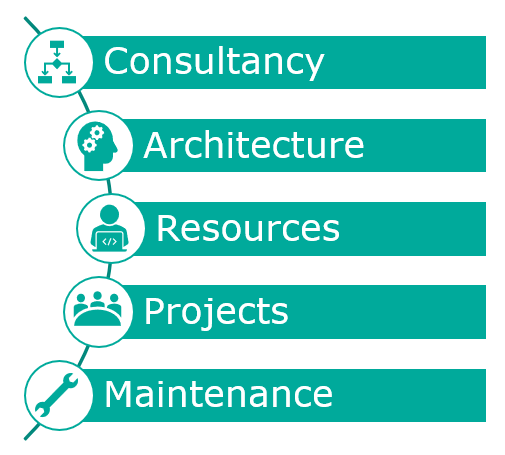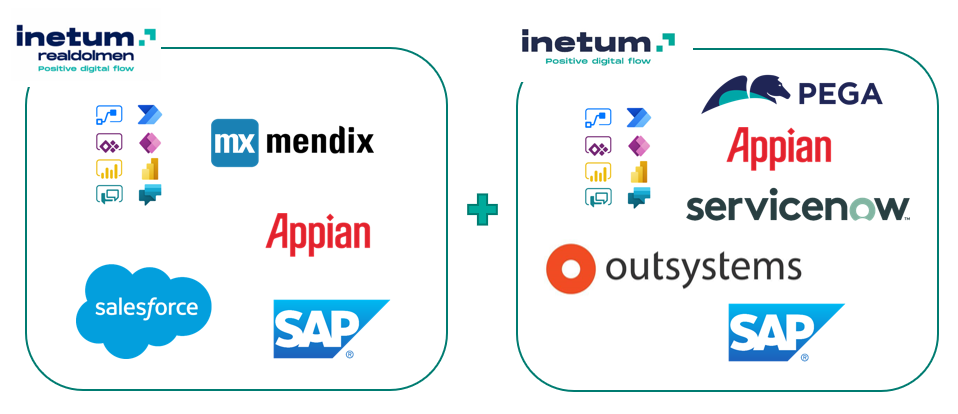Change is a permanent fixture in the world of business. Adapting quickly to new realities is crucial to success, so there is a constantly rising need for digitization and application development. IT departments are swamped by requests from the business but are often unable to keep up with the fast pace, in part due to a growing shortage of experienced IT specialists. Low-code development platforms offer an answer to this situation, and their use has been experiencing rapid growth recently. Research agencies such as Forrester and Gartner predict that low-code will become the future of application development. According to Gartner, by 2024 low-code will be responsible for more than 65% of total application development. A considerable percentage, which you cannot simply ignore as a company when considering low-code as an option for the future.
But wat exactly is low-code?
Low-code is a technology that allows you to build software without having to understand the complexity of a high-code programming language such as Java or .NET. It is a predominantly visual method of software development with little or no manual coding, using a graphical design environment and drag-and-drop methods. You configure low-code software by dragging ready-made building blocks with predefined code, marking connections and visualizing processes. To ensure quality, the low-code platform constantly checks and monitors the integrity of the developed application.
Why low-code?
There are numerous reasons to opt for low-code development. Here are just a few.
- Visual programming means that applications can be developed up to 6 times faster than with traditional methods. This creates strategic agility, enabling you to respond more quickly to business demands and adapt more quickly to changing customer needs, trends and market conditions.
- You can deliver more applications at lower cost, because faster time-to-market means fewer development hours and therefore lower costs. When you also take into account the cost of the low-code platform, the real return on investment depends on how many applications are developed in low-code.
- Because there is little or no manual coding, the likelihood of technical errors or bugs is smaller, which also makes the applications more robust. Fewer errors also contribute to faster user acceptance.
- In addition, you become less dependent on high-level code specialists because a wider range of users can do development. For instance, users with an analytical background, such as analyst-developers and domain experts. This results in a shift of focus, less technology oriented and more business oriented. More users also translates into more ideas for forward thinking and shorter turnaround times, which again means more agility.
- A low-code platform is also useful for experienced developers, because applications can be extended where necessary by in-house programming within the platform. The advent of low-code development also allows developers to focus more on innovation and company-specific applications with a high level of complexity, and less on mundante tasks.
- Another reason to consider low-code is application modernization. This often involves outdated applications whose modernization is all too often postponed for all sorts of reasons. It may be worthwhile to look into which parts of specific legacy applications can be moved into a low-code application more quickly and easily, with equal quality.


